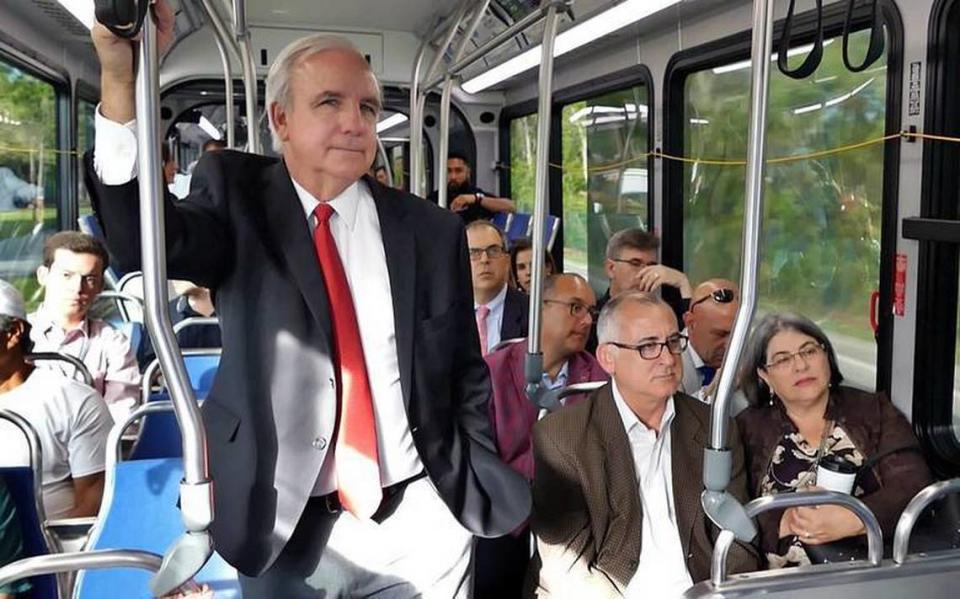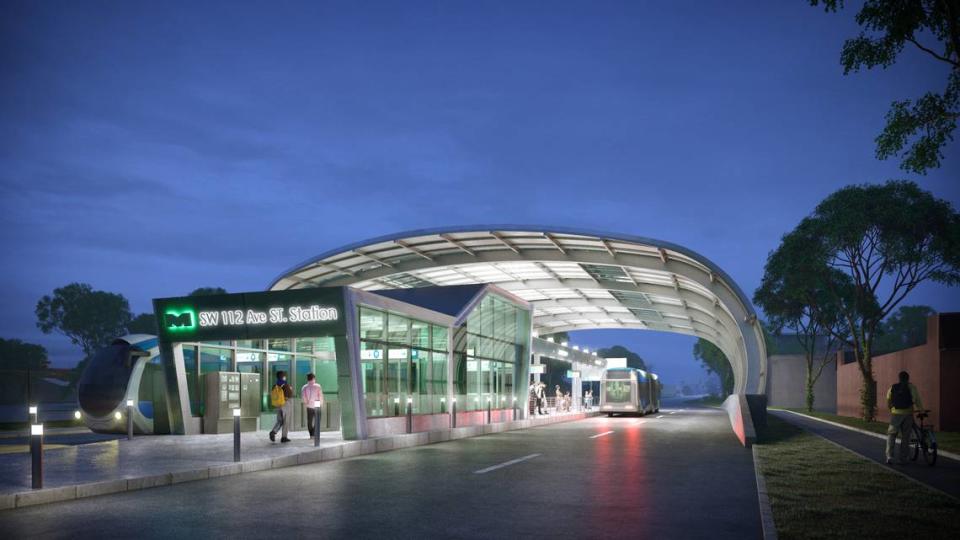The promise of speedier bus rides is falling short of expectations in South Miami-Dade
When Miami-Dade County unveils what’s supposed to be one of the most advanced bus lines in the country, the actual commuting savings won’t seem that revolutionary much of the time.
For most of the day, the new $368 million rapid-transit system for the South Dade busway will only shave four minutes off the current 70-minute trip for bus passengers traveling between Florida City and the South Dadeland Metrorail station, according to a county presentation delivered this week.
READ MORE: Miami-Dade approves ‘rapid-transit’ bus plan over Metrorail expansion in South Dade
“What we have today is not what the public expected,” Robert Ruano, a member of the county transportation board, said after the Wednesday evening presentation by the Department of Transportation and Public Works. “I think of somebody who lives in Dadeland and wants to go to Florida City for a job. You spent $368 million. That person is going to cut four minutes?”
The speedier bus rides promised when the bus rapid-transit (BRT) project was approved five years ago will be limited to rush hours, when county signals will trip green as the BRT vehicles approach intersections being modified with traffic arms to halt traffic and allow the buses to zip through without slowing.
Avoiding red lights means bus trips can be about a third quicker than they are now on the the stretch of road running parallel to U.S. 1 officially named the South Dade Transitway.
Forecasts by the county’s Department of Transportation and Public Works show those automatic green lights during rush hours will save 23 minutes for a bus passenger compared to the current 70-minute bus commute north in the morning.

Red-light blocking will be limited to northbound buses for three hours in the morning, starting at 6 a.m., and then for southbound buses for another three hours, starting at 3 p.m.
Buses versus cars at Transitway intersections
Transit administrators say turning over dozens of intersections to buses throughout the day would cause too much traffic disruption on U.S.1 and the local roads that feed into the highway, and that the limited signal “preemption” was needed for state approval in 2020 for a project partially funded by Florida.
They also noted the crossing arms will still deploy in off-peak hours, when buses will get quicker green lights through a computerized tracking system prioritizing BRT traffic.
“The objective,” said Jose Cueto, deputy director of transportation, “was to find the right balance between providing the best possible transit service while also providing mobility to roadway users and not collapse the grid.”
Once operating, the new bus system will give Miami-Dade the longest BRT route in the country and the third-longest in the world, according to the county presentation.

Detailing the BRT service plan before the county’s Citizens Independent Transportation Trust touched on a number touchy subjects for Miami-Dade leaders as they prepare to launch the first major transit upgrade since Metrorail extended to Miami International Airport in 2012.
Can the new BRT service ever lead to Metrorail expansion?
In 2018, then-Mayor Carlos Gimenez won support for the BRT line by pitching it as an affordable option that would provide times similar to the street-level rail line that South Dade leaders were demanding.
A southern Metrorail extension was pitched to voters in the 2002 referendum that created the half-percent transportation sales tax that the trust board oversees.
“It’s just mind-boggling to understand ... how we’re ever going to increase ridership enough to warrant getting rail,” said Peggy Bell, a former Cutler Bay mayor who serves on the Citizens Trust board.
Board members demanded the detailed presentation after transportation administrators first mentioned the one-way plans for signal preemption at a June meeting.
As a county commissioner representing areas served by the Transitway, Miami-Dade Mayor Daniella Levine Cava opposed the Gimenez plan in favor of a rail line that estimates said would cost more than $1 billion. In 2018, she sponsored a resolution requiring the county to pursue Gimenez’s promised “gold-standard” BRT line that wouldn’t skimp on features like crossing arms and signal preemption.
Elected mayor in 2020, Levine Cava’s administration now is explaining why a gold rating is in reach but not assured with the limited use of red-light blocking for the buses.
Backers of the BRT model also sold it as waypoint toward running tracks along the Transitway, with the superior bus service building the kind of ridership that would make Miami-Dade competitive for federal train grants in that region.
Most of the BRT gold standards, as judged by an international board, remain: the 14 stations under construction include air-conditioned waiting areas, advanced ticketing and real-time arrival times. The new buses have doors that allow group boarding at street level, which should make station stops quicker.
Eulois Cleckely, the transportation director, noted that most passengers using buses on the Transitway now are traveling during rush hour. “The benefit is substantial for the majority of people that are going to be using the service along the corridor during these peak periods,” he said. “And experiencing a significant reduction in travel time.”

Cleckley said Miami-Dade has a deal with Florida’s Transportation Department to review BRT service once it’s operational and consider changes based on actual results. Javier Betancourt, director of the Citizens Trust board, said that should give more BRT riders a chance for the kind of rapid service pitched as a rail alternative when Miami-Dade agreed to the tax-funded effort.
“My hope is when they roll it out, they’ll see the impact isn’t that significant on vehicular traffic,” he said. “Then they can extend those times.”

